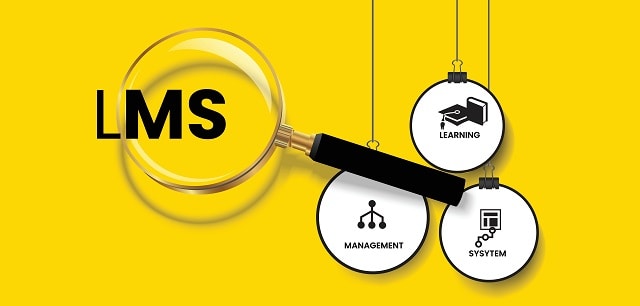
Creating online courses in the past was very much a custom affair until SCORM set the standard for the eLearning format. The main driver for SCORM was that custom developed courses could not easily be ported from one LMS to another. Additionally, if you wanted to buy a course from a Publisher pre SCORM, it was difficult as there was no standard to adhere to. It would be like Software Publishers today, trying to publish software for an infinite amount of Operating Systems instead of just Microsoft, Apple and Linux (or Android for phones).
SCORM is still the default option for many organisations. It does have drawbacks due to its age, limitations with offline learning, and incompatibility for older content with mobile devices’ updated browsers due to its reliance on older technologies.
Below we will look at SCORM, its relevancy, and its future with eLearning.
What is SCORM?
SCORM stands for Shareable Content Object Reference Model. When you publish an elearn from an elearning authoring tool, you can choose to output the file as a SCORM object. The output is basically a ZIP file. Inside the ZIP is a series of folders each containing Objects (course assets) that make up the course. For example if your course has images or video files, they will be stored in a folder. There will be information in another folder which contains executable information such as HTML and (in the old days) Flash files. An important component of SCORM is a set of instructions (imsmanifest.xml file) that ‘tells’ the LMS how to; handle content, give information regarding the courses’ titles, how these courses are to be played and other instructions that the LMS needs to know.
This standardised approach allows any LMS to launch, display and record a learners journey through the course. Additionally, if the SCORM course contains quizzes, the correct answer options are included which tells the LMS what result to record.
Before SCORM, online courses that were created for one system would take a lot of additional time and effort to get it to work on a different platform. Often, it involved a complete rebuild. This meant that it was difficult for an enterprise to move from one LMS vendor to another.
Is SCORM relevant?
SCORM is still a powerful force in eLearning. It is still used by eLearning professionals and is the most widely used format for LMS-compatible eLearning courses. It became the standard to provide the blueprint for developing eLearning courses and remains the most popular choice for publishing eLearning content.
SCORM remains the most popular choice for a few reasons. Creating SCORM compliant is as simple as choosing the SCORM option when publishing your course using your preferred course authoring tool. You do not need programming experience and you require very little technical knowledge which means you can get on with being creative.
SCORM can also dictate the pace of the course. It will allow you to set limits so the learner can stay on a page or how much time they can spend in the course overall. This allows you to control the content and track the volume of learning hours you want to allocate.
SCORM is also widely supported. If you are creating eLearning courses or having courses developed, they will support SCORM. This makes migrating from one LMS to another easy to manage without having technical issues or even incompatible courses.

Is SCORM Needed?
The short answer is no. There are other publishing options such as Common Cartridge which not only allows you to export the course elements it also allows you to export student interactions, web links, distributed content, quizzes, discussion boards – essentially the whole course. In comparison, SCORM only contains the learning assets and the quiz content and is limited to a single course. With Common Cartridge you can have multiple SCORM objects (courses) as well as everything else that accompanies the course including linkages and access to other online resources that may form part of the learning experience.
At Optivly, we often develop courses that are not SCORM based. Our preference is to make full use of the Client’s LMS and bring together a number of engaging elements to ensure that the learning experience is enjoyable, memorable and engaging.
SCORM Weaknesses
The original design and intention for SCORM was based on the principle of an individual learner going through a self-paced course on a computer. This design has limitations in terms of learner engagement and does not take into account more modern developments in learning where there is a Teacher/Facilitator guiding a cohort through. A SCORM package also does not contain the authorisations that a user might need to access an external learning tool built into a course. For example, authoring and quiz tools like H5P are often used to create interesting and engaging learning experiences. To incorporate external tools like H5P requires the use of LTI (Learning Tools Interoperability) and associated permissions, none of which are understood by SCORM.
Our approach to learning always starts with what problem the client is trying to solve and what the attributes of the learner are. We also need to understand the way in which the learner will access the learning. For example, SCORM doesn’t play so well in an offline mode and can have issues displaying on a mobile phone, so if learners are likely to access the course via a phone we tend to avoid publishing in SCORM.
SCORM is by nature a very linear tool. The concept is for a learner to start at the course introduction page and then work their way through each topic. There is no interaction with other students, no polls, discussion boards, mentor/teacher interaction, etc. it is a modality that is very much a single learner going through a course in isolation. In order to get around this issue, many organisations will build a course in their LMS and then use a mixture of SCORM objects throughout with the other aforementioned elements provided natively by the LMS. This type of design is fine however, if the LMS is not Common Cartridge Compliant then when it comes time to migrate that course it either cannot be done or it becomes a hugely manual task to migrate each individual course.
Finally, the metrics SCORM can track are limited. It can track scores, course completion, and the course time spent. It lacks in tracking real-time engagement, which is needed to make the course a more effective learning tool.
Are all LMS’s SCORM compliant?
An LMS is SCORM compliant if it is suitable for SCORM files. Almost all LMS is suitable for SCORM or even for each version of SCORM that has been released. Since SCORM is the most widely used, there are plenty to choose from that are SCORM-compliant.
To ensure your LMS is SCORM compliant, you will need first to find out what version of SCORM the LMS supports. The most common versions are SCORM 1.2 and SCORM 2004. If your LMS only supports SCORM 1.2, e-courses developed for SCORM 2004 will not work with your LMS.

What Are Alternatives to SCORM
There are alternatives to SCORM starting to gain popularity. Below we will look at two of the most popular ones.
- xAPI
Experience API was developed to support and track the student’s experience. It supports learning outside an LMS and does not require an internet connection for the student to complete the course. The activity is recorded and uploaded when the internet connection is re-established. Experience API (xAPI) is also mobile learning compatible. It does not require a web browser to operate and can be administered through mobile apps. It also tracks more complex learning that takes place in simulators or blended learning, as well as mouse clicks and open answer responses in real time.
- cmi5
cmi5 attempts to combine the abilities of SCORM and xAPI into one system. It allows offline mobile learning with no internet connection and sends the progress to the LMS when the connection is restored. Cmi5 records any activity, such as audio, video, or essay response by the student. It can also track images, PDFs and simulations as well.
cmi5 is also easier to implement than SCORM. It also allows for easier content distribution. It only imports the course structure, not the content. The content can be stored on a distribution network with servers worldwide.

Conclusion
SCORM is still a widely used industry standard when it comes to eLearning courses. It is over a decade old and shows its age. There are new versions being developed to overcome some of the limitations that have been discussed above. When deciding whether or not to use SCORM, one of the key things to think about is ensuring that you do not paint yourself into a corner making it difficult to migrate from one LMS to another should you need to.
The other main item for consideration is the needs of the organisation and the learner. How will the learner interact with the course? What device will they use? How will we ensure that they are engaged in the learning process and will we need to provide teacher/facilitator interactions? Answering these questions will help to determine how you should approach building and publishing your course. For more help on these questions check out our post on the steps of eLearning course development.
References
https://elearningindustry.com/getting-started-with-scorm-how-does-scorm-really-work
